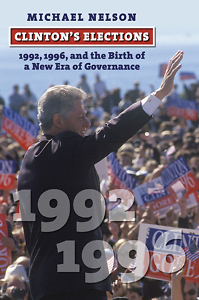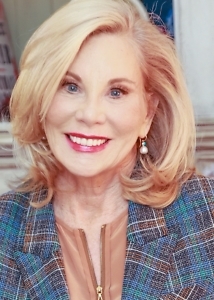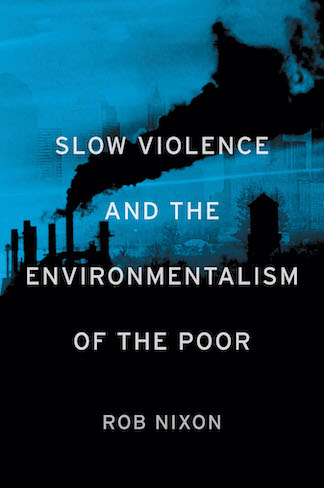The Age of Clinton
Presidential scholar Michael Nelson assesses the political landscape of the 1990s
The 1990s bred uncertainty in American politics. The Cold War drew to a close, and Ronald Reagan no longer loomed over Washington D.C. When the decade began, the Democratic Party appeared doomed to irrelevance. By decade’s end, however, Bill Clinton had served two terms, and the Democrats were again a force in presidential politics. In his latest contribution to American political history, Clinton’s Elections, Michael Nelson recounts the contests of both 1992 and 1996. His perceptive work explores how Clinton moved his party closer to the center — even as American politics grew more polarized.
 Michael Nelson is the Fulmer Professor of Political Science at Rhodes College and the author of many books on American politics, including Resilient America: Electing Nixon, Channeling Dissent, and Dividing Government and Trump’s First Year. He is also a contributing editor and columnist for The Daily Memphian and a political analyst for WMC-TV in Memphis.
Michael Nelson is the Fulmer Professor of Political Science at Rhodes College and the author of many books on American politics, including Resilient America: Electing Nixon, Channeling Dissent, and Dividing Government and Trump’s First Year. He is also a contributing editor and columnist for The Daily Memphian and a political analyst for WMC-TV in Memphis.
Nelson answered questions from Chapter 16 via email.
Chapter 16: By the beginning of the 1990s, what were the identities of the two major parties? How had they evolved over the previous decades?
Michael Nelson: American politics settled into a pattern in the quarter-century preceding the 1992 election. The Republican Party dominated presidential elections, winning five of six between 1968 and 1988 (four of them by landslides). In contrast, the Democrats always controlled the House of Representatives and almost always controlled the Senate.
One reason for the difference was that voters trusted the GOP in matters of national security and the Democrats in matters of domestic policy. When the Soviet empire collapsed in 1990 and Iraq was driven out of Kuwait in 1991, most leading Democrats assumed that Republican President George Bush would be unbeatable in his bid for reelection in 1992 and chose not to run against him.
Gov. Bill Clinton of Arkansas saw things differently. With the world no longer appearing to be as threatening to American interests, he believed voters would choose their next president on the basis of domestic issues.
Chapter 16: In 1992, Bill Clinton lost both the Iowa caucus and the New Hampshire primary. His candidacy looked kaput. How did he manage to win the Democratic nomination and then the general election?
Nelson: Facing a weak field of opponents for the 1992 Democratic presidential nomination, Clinton was riding high at the start of the election year. But his candidacy was almost waylaid by allegations early in the primary season that he had conducted an extramarital affair as governor with Little Rock entertainer Gennifer Flowers and lied in order to dodge the draft during the Vietnam War.
Clinton’s ability to take these hits and survive politically attested to both his centrist focus on domestic issues and his remarkable personal resiliency. “I’m the big rubber clown doll you had as a kid,” he often said, “and every time you hit it, it bounces back up. That’s me—the harder you hit me, the faster I come back up.”
Chapter 16: The 1994 midterm elections had a profound effect on Clinton’s presidency. How did they shape the status and message of both parties?
Nelson: Marked by the failure of Clinton’s health care reform initiative and the success of his deficit-cutting budget, his first two years as president were rocky. (His budget turned out to be popular in the long term because of the prosperity it fueled, but it was unpopular in the short term because of the taxes it raised.) Seizing on his unpopularity in 1994, the Republicans won control of both houses of Congress for the first time in 40 years.
Mistakenly interpreting its victory as an endorsement of conservative policies rather than what it actually was — an expression of disappointment in Clinton’s early leadership — the GOP proceeded to overplay its hand. Led by House Speaker Newt Gingrich, the Republicans shut down the federal government for several weeks starting in late 1995, falsely assuming that the voters would side with them against the president.
Senate Republican Leader Bob Dole, who knew better, felt trapped into going along with Gingrich for fear of jeopardizing his chances of winning the GOP presidential nomination in 1996.
 Chapter 16: Did Bob Dole ever stand a chance in the 1996 presidential election? Why or why not?
Chapter 16: Did Bob Dole ever stand a chance in the 1996 presidential election? Why or why not?
Nelson: In 1995 Dole was, if anything, the favorite to defeat Clinton’s bid for reelection. Shackled to Gingrich during the prolonged government shutdown, Dole’s chances plummeted even as Clinton’s ascended, buoyed by a booming economy. Dole did not lead Clinton in a single poll taken during the entire 1996 election year.
Dole’s party largely abandoned him as Election Day approached, redirecting its efforts to hanging on to its congressional majorities.
Chapter 16: Now that we have some historical perspective, how should we understand Ross Perot’s third-party bids for the presidency in 1992 and 1996? Did they alter these elections? Did they suggest any political trends that continued into the 21st century?
Nelson: President Bush’s supporters blamed Perot’s candidacy for his defeat in 1992, despite studies showing that Perot drew support equally from Bush and Clinton. In truth, the challenge to Bush’s re-nomination by conservative pundit Pat Buchanan was politically more damaging. Presidents who have to fend off opposition from within their own party — not just Bush in 1992 but Gerald Ford in 1976 and Jimmy Carter in 1980 — enter the general election campaign in a politically weakened state.
In a sense, Donald Trump is the political spawn of Perot and Buchanan. Like Perot, he gained renown as a businessman who branded his lack of governing experience as a virtue. Like Buchanan, he was a media star. Like both of them, Trump said — and continues to say — things that defy conventional political norms.
Chapter 16: How did the Clinton era forecast the political climate of the 21st century?
Nelson: Clinton’s second term came to an end in 2001, when he was just 54 years old. One way or another, he hovered over American politics for the next 15 years, culminating in Hillary Clinton’s campaign in 2016.
More than that, the Clinton era marked a reversal of the previous pattern of governance. The Democratic Party has become stronger in presidential politics than it was before he arrived on the scene, yet weaker in congressional elections.
It’s also worth noting that the bitter partisan polarization that marks contemporary American politics originated during the Clinton presidency, mostly because of the venomous opposition he generated among his opponents. It’s no coincidence that both his presidency and the Trump presidency ignited sustained efforts to impeach and remove them from office.
We now live in an era of what I call “de facto divided government,” in which both the Republican and Democratic parties strive not just to oppose but also to undermine each other no matter which one controls which branch of government.

Aram Goudsouzian is a professor of history at the University of Memphis. His most recent book is The Men and the Moment: The Election of 1968 and the Rise of Partisan Politics in America.





